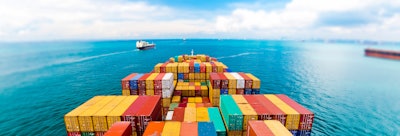
Ocean freight faces demand volatility, a surplus in vessels, congestion issues on two main routes via the Suez Canal, and drought in the Panama Canal; the Cape of Good Hope, South Africa now posing as the preferred alternative.
With many more shippers opting for the same route, carriers will see a bump-up in schedules and transit times early this year, especially those from the Asia Pacific to Europe and Southeast Asia to North America. Planning anywhere from one to three weeks ahead of usual.
Carriers must plan schedules strategically, predict shipper demand and optimize capacity to ensure profits. Here’s how.
Plan Schedules and Communicate with Shippers in Advance
Since the Panama Canal is offering limited availability, shippers that deliver goods from the port in Panama to the east coast of North America will travel via Suez, which is a 40% longer route. Therefore, clever shippers will plan an additional three weeks to avoid stockouts.
The extra demand could mean carriers require up to four more ships to fulfill all requests. In addition, those carriers that inform shippers of the potential delays and the need to order in advance could help them secure more bookings. Assisting shippers in meeting their demands on time, too, builds trusted relationships.
Still, with the Suez Canal highly congested, carriers must be extremely strategic in which vessels they schedule and where. Many carriers ordered larger, more efficient vessels over the pandemic — using these ships to complete the longer journeys will be the most productive.
They must also look into alternative routes and the maximum ship size. With this information in mind, they can predict which shippers would be interested in taking these routes to avoid heavy delays.
Use Scenario Planning and Forecasting Tools Side by Side
To say that mapping out every route, potential shipment and decision shippers could make would be a cognitive overload is an understatement. Digital twin-powered scenario planning tools simplify this for carriers since they replicate scenarios virtually. The technology can help carriers map anything from the number of shipments on a vessel to the potential routes the vessels could take — and, programmed with the right parameters, likely hurdles on the way.
With scenario planning tools, carriers can review the cost and timings of having an extra vessel scheduled Tuesday via Suez versus the financial loss of not fulfilling specific shipments.
The trouble is, if carriers offer too much availability, they risk freight rates dropping, and wasted space drains profit margins. Carriers are tasked to predict the exact shipment amounts and balance this with location and duration for accurate route planning.
The balancing act is where scenario planning and predictive analytics work hand in hand. Carriers can use advanced analytics to forecast the likelihood of shipments, destinations and volumes, leveraging their historical data, external factors, and seasonality, while scenario planning tools measure the risk.
Still, it’s essential to note that external influences, from forgotten orders to war outbreaks, must be factored into the equation. Carriers using these tools must seek guidance from industry professionals to regularly ensure the parameters are up-to-date.
Collaborate To Enhance Fleet Flexibility and Dynamic Pricing
Flexibility in ocean freight means being able to adjust the size and type of vessels based on route requirements and shipper demand. However, it gets tricky when carriers assign vessels to particular routes months in advance.
The main objective is to have enough demand to fulfill capacity and little competition to ensure carriers can charge a profitable price. But to manage sales volumes against competing players, carriers must collaborate.
Some intelligent maneuvers have already been put into play: carriers collectively reduced offered capacity from Asia to the North America West Coast in April by 7% year-on-year, hoping to encourage higher rates. And while that might not have stuck, the 14% year-on-year capacity slash in July and August had a more lasting result — both FEU (forty-foot-equivalent) spot rates and long-term contracts rose to US$2,200 per FEU/exceeding the US$2,000 per FEU mark, respectively.
In September 2023, carriers demonstrated their laser-focused capacity management abilities to retain rate control with announcements of blanked sailings for week 40 — the week before the holiday. While shippers might hold off to wait out the rise in rates, others are beginning to realize they need to book up to ensure they bypass the delays from congested and low-water channels.
For ocean freight to manage its capacity and ensure it meets shipper demand and profit, it must plan schedules strategically, predict shipper demand and optimize capacity. Digital twins technology and advanced analytics will be vital in the coming year to help with short and long-term planning. These strategies, alongside industry collaboration, will help carriers maintain buoyancy in the New Year waters.




















